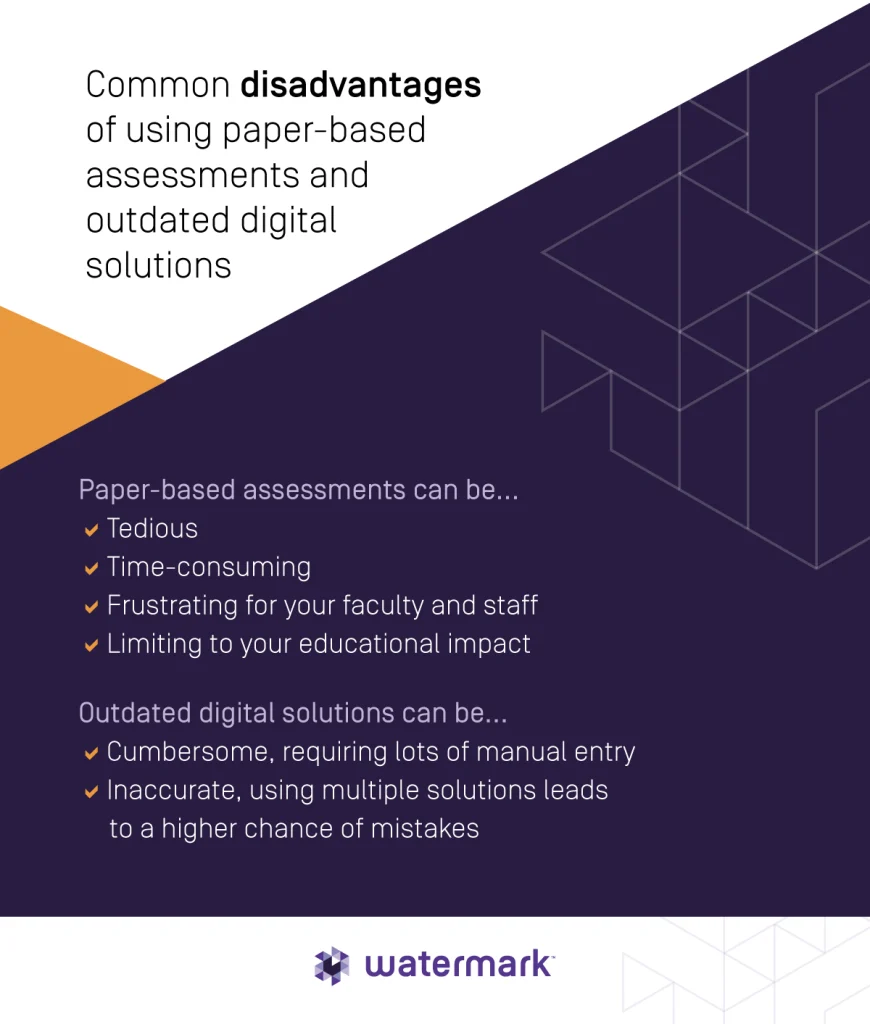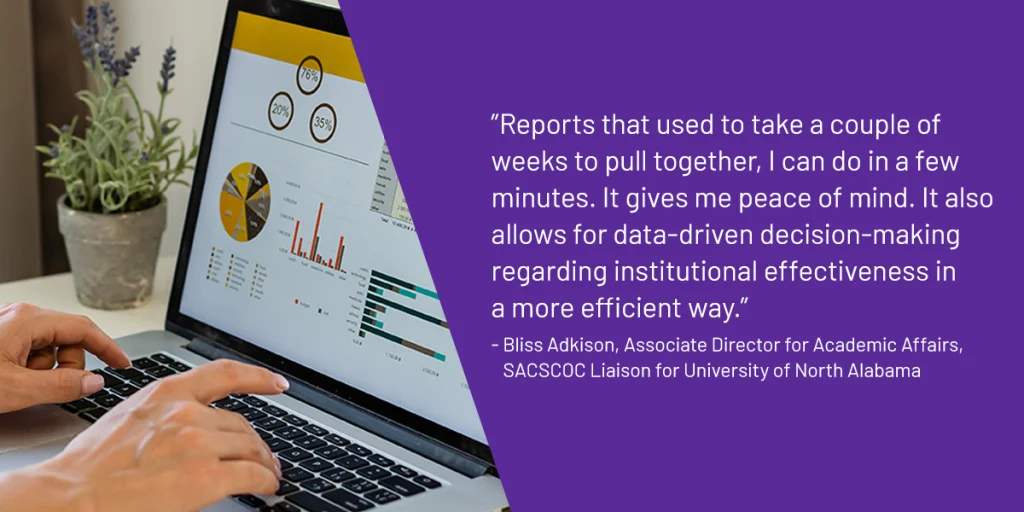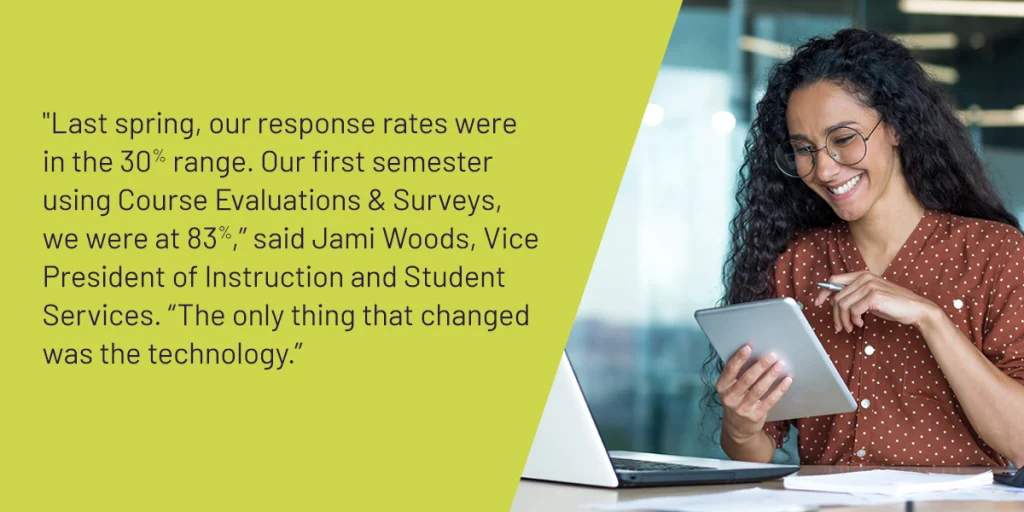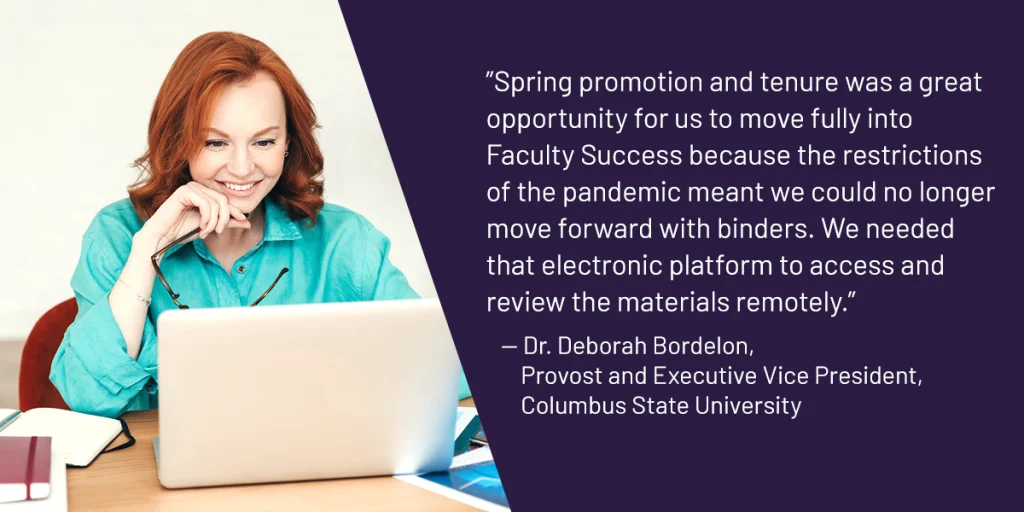



The proper accreditation is foundational to your institution’s success, which can also make accreditation season particularly anxiety-inducing for your faculty and staff. However, with the right accreditation readiness solutions, it doesn’t need to be. In this article, we’ve outlined some of the biggest challenges in accreditation preparation – and how colleges and universities are strategically overcoming these obstacles today.
Outcomes-based assessments are an important part of accreditation review. Having strong assessment data demonstrates to accreditors which educational goals your institution has reached, and it gives you an opportunity to share your plans for continual improvement going forward.
However, traditional ways of conducting outcomes-based assessments aren’t the most effective option in our modern landscape. Whether colleges and universities still rely on paper-based assessments, or they are using a disparate network of digital spreadsheets, many institutions aren’t taking advantage of tools that could make this process simpler.
There are many reasons why paper-based assessments aren’t the best option for colleges and universities. Here are a few of the most common pitfalls.
Using outdated software or digital solutions (like spreadsheets and PDFs) for outcomes-based assessments can have just as many issues as using pen and paper. Here are some reasons you may want to consider upgrading your technology.

At the University of North Alabama, the team noted many problems when using a “homegrown” data collection system for its institutional effectiveness reporting. According to Bliss Adkison, the Associate Director for Academic Affairs and SACSCOC Liaison, this method, “was a very clunky, non-transparent data import system.” It would take Adkison two weeks to create a single report. “It was very manual, using unstructured data from Excel sheets and PDFs.”
In addition to this being a frustrating experience for Adkison, it also led to inaccuracies in the data due to how the responsibilities were split up amongst the administration. Adkinson said, “There was lots of room for error because someone other than me was interpreting the data.”
After switching to a more modern solution, Adkinson is pleased with how much time she’s saved, and how much easier it is to access the correct data.

Course evaluations and surveys are a critical part of demonstrating continuous improvement to accreditors. Yet getting valuable, actionable feedback can be quite a challenge. Here are some common frustrations that colleges and universities face when administering surveys and collecting student feedback.
Course evaluation response rates at Roanoke-Chowan Community College were hovering around 35%, and the school’s institutional effectiveness team was concerned. Thinking a new tool might help, the school used SurveyMonkey to run course evaluations for a semester. But trying to tweak this solution to fit into the unique needs of higher ed was proving to be difficult.
The team quickly realized that a course evaluation solution designed for higher education was necessary. “I wanted to be sure we were using an instrument that would generate a significant response rate because our students’ feedback is critical to continuous improvement,” said Dr. Murray J. Williams, College President.
After incorporating a solution tailor-made for higher education, Roanoke-Chowan Community College saw response rates nearly triple. “The only thing that changed was the technology,” said Jami Woods, Vice President of Instruction and Student Services.
Since 2009, Kimberly Brantley, Senior Research Analyst at Embry-Riddle Aeronautical University, has focused on improving the course evaluation, promotion and tenure, and accreditation processes for the school. Before Brantley joined the team, Embry-Riddle conducted course evaluations using paper and pencil. “The data was so hard to get to and it took too long to be useful,” Brantley said. She knew this wasn’t acceptable, so she welcomed in a new plan.
Now, Brantley uses accreditation prep software with survey capabilities to target student surveys at the course level. Then, she assigns an administrator to review the data from each course. This has made data collection much more efficient, and now Brantley has actionable information that she can refer to year after year.

Accreditation preparation requires a significant amount of reporting on the credentials of your faculty and how your institution systematically supports their continued development. Storing faculty transcripts can be a challenge, especially if there is no centralized way to supplement them with the instructor’s professional development and other credentials to teach. Here are some common complaints about faculty activity reporting, and how to make the process easier as you get ready for your next accreditation event.
At West Virginia University, they needed to produce faculty transcripts to meet new standards that The Higher Learning Commission (HLC) had recently put in place. But these proof-of-credentials were not on file at the university, despite institutional and departmental policies that required departments to store this information.
“We found out that we didn’t have vitae on file and didn’t have transcripts for nearly 80% of our faculty,” Louis Slimak, Assistant Provost of Curriculum & Assessment, said. “Faculty had cartons of paper that went to their department chair. Then, after reviewing the contents of the boxes, they had to carry it up to the provost for review.”
Now, West Virginia University uses a platform made for higher education to store its faculty accomplishments. They use it for promotions and tenure so they can collect the faculty’s college and departmental service accomplishments, while also capturing recognized professional service outside the institution.
Columbus State University also struggled with a paper-based system for storing faculty data. “The first year I was at Columbus State University, someone rolled a cart full of binders into my office,” said Dr. Deborah Bordelon, Provost and Executive Vice President, “I knew we needed to move into a more dynamic and electronic process.”
The team decided to transition to a faculty success software in March of 2020, and with the impending pandemic, the team was very grateful that they made this shift. Otherwise, much of the necessary information would have been inaccessible, stored in binders that were locked in various buildings at the university while faculty were required to work from home.
The new platform simultaneously supports institutional and unique department and college-level data capture and reporting needs. Faculty enjoy easier report generation, and they now have a central location for annual reviews and faculty evaluations. “If we keep our data on our activities, it’s all there, and we can use it in multiple reports,” said Dr. Tim Howard, Vice Provost. The success of this new tool has led Columbus State University to extend its use to capture graduate faculty applications and internal grants.

Accreditation is an important checkpoint for your institution. It is something that requires preparation, intentionality, and the right tools to complete successfully. At Watermark, we provide an accreditation package of three complementary and integrated solutions that you can use together to drive institutional effectiveness every day and accelerate your readiness for your next accreditation event.
Planning & Self-Study drives systematic planning and outcomes assessment across all levels of your institution, including non-academic units like student affairs and career services. It is also a powerful accreditation reporting tool, allowing for a collaborative and purposefully designed space to craft your accreditation self-study. Course Evaluations & Surveys easily deploys evaluations and surveys to better understand student experiences and the quality of student programs. Faculty Success helps you manage and report on faculty credentials to inform course loads and demonstrate teaching qualifications.
Together, these three complementary and integrated solutions help you surface deep insights from multiple angles and stakeholders. With our tools, you won’t need to get ready for accreditation season. You’ll be ready.

©️2024 Watermark Insights, LLC or its affiliates. All Rights Reserved. Other trademarks, including Accreditation trademarks, may be trademarks of their respective owners. This article is for information purposes only. Watermark believes the information in this article is accurate as of its publication date, and the information contained herein is subject to change without notice. Watermark is not affiliated with the Accreditor and the Accreditor did not participate in the creation of this report. Watermark makes no warranties, express or implied, in this report.
























































































































































































































































































































































































Submit this form to schedule a meeting with one of our reps to learn more about our solutions. If you need customer support instead, click here.